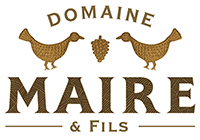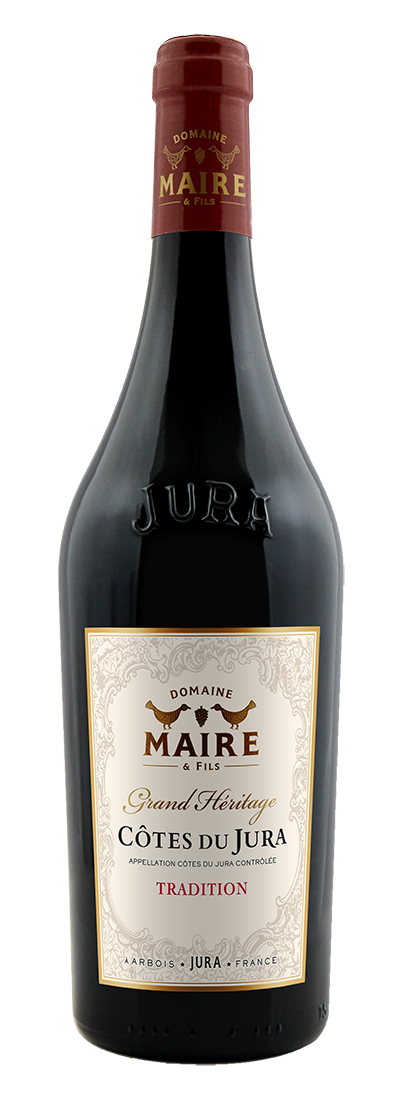CÔTES DU JURA - TRADITION 2020

In the glass the wine offers an intense dark cherry-red colour. The nose gives off small red berries aromas, with pleasant spicy hints. In the mouth, the wine is lively, with hints of spice and ripe fruit. It has an elegant structure and a long, elegant finish.
The work in the vines, is based on the respect of the nature and the soil. For young vines, located on steep slopes, to avoid erosion, we cultivate a row out of two, practice soil reassembly to aerate the lands subjected to settlement due to moisture, and grass with plants.
Such as clover, which, by competing on the vine, can modulate its mineral and water supply and control its vigor and yield.
The restructuring of the vines contributes to the harmony of our cuvée: the young vines bring the exuberance, the freshness and the acidity. While the older specimens bring the structure and character.
After the manual harvest, the grapes are receipted at the winery and put into thermoregulated stainless steel tank for a total maceration of 12 days. Followed regularly throughout the fermentation, incorporating some pumping and pigeage.
At the moment of pressing, the press and drop juices of each cuvee are assembled and withdrawn for malolactic fermentation on fine lees.
The wines are then aged in stainless tank for 8 months and blended together (70 % Pinot Noir, 20 % Trousseau and 10% Poulsard) before light filtration and bottling.
The current public health crisis has certainly marked this year’s harvest, which nonetheless has been able to go ahead!
We were slightly less affected in the Jura vineyards, by drought than other regions thanks to rain during the month of August. One of the main challenges with this very early harvest was to achieve both optimal ripeness and balance.
Harvest was spread over a month on this estate, which has 234 ha (578.22 ac) in production this year. The harvest was good thanks to the replanting and reorganizing carried out in the vineyard over the last five years.
Initial tastings, Jacques Hauller:
‘The Jura, now more than ever, can lay claim to being the sixth sub-region of Burgundy! It boasts citrusy Chardonnays with a distinct mineral quality despite the very ripe state of the grapes and fruity Pinot Noirs with ripe tannins.
Careful plot selection reveals the potential of our Vignes aux Anes Trousseau; Vignes de Sorbief Savagnin and Chardonnay; a new gem like the delicate, elegant Pinot Noir in Arbois-Pupillin in the locality called ‘La Ronde’, which has been planted alongside the largely-forgotten native variety, Petit Béclan, which produces lively, light red wines which are great for blending purposes; and last but not least, carefully-selected Chardonnay from the vines at Grange Grillard.’

